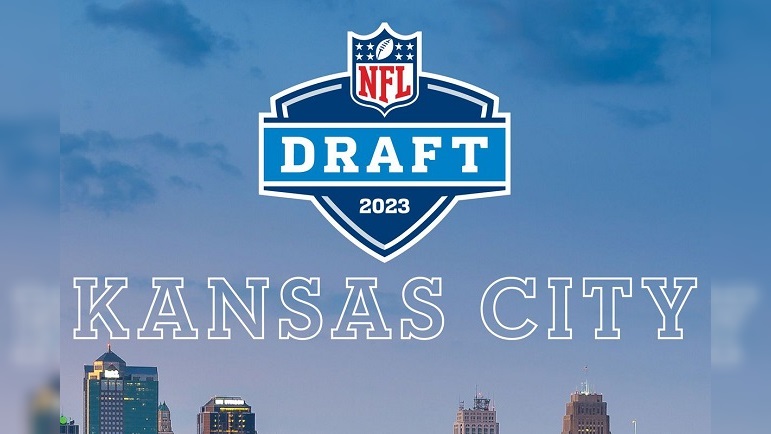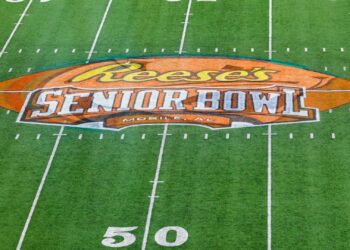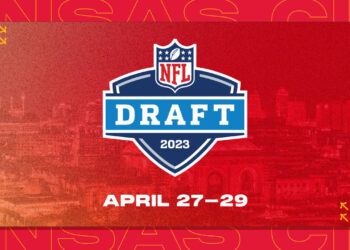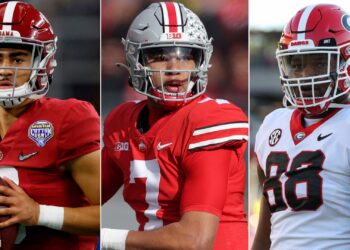By: Greg Rector
Scouting football players is no small task and many scouts fall into different camps as to what they look for in a player. There are some basic things that the average NFL fan doesn’t consider for players. Scouts grade players at each position and they have their own checklists for each position. That part is often overlooked incredibly by the more casual fan who gets excited by the draft combine and the various pro days they see on the NFL Network. As the college season is winding down to the conference championships and the various bowl games, these reports are becoming more complete by the day.
The Basics
You start out by listing the player’s name, position, school, class (junior/senior), and then beside that their known measurables like height and weight (take with a grain of salt until confirmed at a combine or pro day, sorry but schools embellish these numbers all the time) and any other measurables available like a 40-yard time
If you read scouting reports many will be surprised to find out that the first thing to be listed is the background and character of a draft prospect. That means his high school days are researched, who coached him, and was his high school successful, whether was he an all-state player, was a 5,4, or three-star recruit, or even a walk-on. Then you take into account between his high school and college career other factors such as LEADERSHIP, EXPERIENCE, DURABILITY, FOOTBALL IQ (Varies by position) MENTAL TOUGHNESS, and OFF THE FIELD. The last one means looking into what kind of students they are, do they take their studies seriously, are they working/volunteering in the community. Do they take film studies seriously? Basically vetting each prospect. Each category is scored between 1 and 10. Despite what you see sometimes when they get into trouble off the field as a pro, this is taken seriously by scouts and teams. Character matters.

ATHLETICISM
This one is pretty simple. Things like balance, coordination, flexibility, explosiveness, and body type again are all graded from 1 to 10. This gets combined with their measurables to give you an idea of the athletic abilities the player currently has and what they will be in the future. You often hear about a player’s “floor,” and “ceiling,” well this area helps in that particular guessing game.
POSITION GRADES
Of course, this is where things get position specific, no one cares if an offensive tackle has arm talent, so that isn’t how you grade that position. Let’s take a look though at some of what a scout looks at for an offensive tackle. Some will start with the upper body and some with the lower body. I personally like the lower body first. With a tackle prospect the lower body keys I want to rank the following. Anchor (Do they get pushed around or prevent it?) Leg Drive (does it equate to their explosiveness measurements?) Upfield Control (Do they win their one-on-one battles with D-lineman) In Space, Lateral, and Foot Quickness. Then I move to the upper body and look at things like Hand strength, Hand exchange (the technique) Initial Punch, Extension (33 inches considered ideal, not an absolute, see Sewell and Slater) Engaging (both first and second level) finally Intensity. Then I take all that and look at their overall Blocking Technique in the pass and running game. This is where you rate them for Football IQ, Hand Placement, Kick Slide, Power and Speed Rush (how they deal with each type of defensive rush technique), and finally, Body Technique (Balance is a big one) Once all of that has been graded you move on to additional information such as a player comp (Reminds me of Trent Williams) as an example. What round do I project this player to be drafted or a UDFA candidate? Then that player’s best scheme fit ( Power running/ Outside zone scheme) Injury History and Career Accolades (Second Team All-American, All-Conference first team) finish that off with key stats ( Sacks allowed, pressures allowed, snap count) some scouts will write a novel as a summary, whereas I prefer bullet points. I like to note where the player’s progression has been best and note flaws especially if it’s something that can be improved upon or just the way it is for that player. That’s what coaches want to know at the next level. I also note which games I watched for each prospect. Personally, I like to look at them in 5 to 8 games as much as possible. These notes are separate from the actual profile. I want to see them dominate against a weaker opponent, and exceed expectations against better competition. It’s the subjectivity component of the overall process. You repeat all of this for players at every position except you use different keys as per position requirements.

Set Aside Your Own Biases
With every prospect, the very first rule is “Do Not Scout the Helmet,” Folks know I love the Notre Dame Fighting Irish and despise “That School Up North,” located in Ann Arbor. You have to set all that aside when looking at a player. That also includes understanding the level of competition each player has played in. There are always those players from so-called non-power conferences and even the lower divisions. It gets harder but this is where you find hidden gems. You are using all this information and see if that player can be a solid to spectacular contributor to a team. some will of course jump off the screen and scream future All-Pro, while others need to be a project who just might end up surprising you with a bit more maturity.
A Big Picture
Many folks only look at a player in his draft-eligible season. That’s a big mistake. While most will focus on the junior/senior seasons, the draft combine, or a pro-day, the rest of us don’t, we go from the freshman season onward. It’s a whole lot harder now than in years past thanks to the transfer portal as well. Finding a player’s film from school A and then from the new school is so much fun. Since I used an offensive tackle as an example the other part of the equation also becomes can they play tackle at the next level or are they better suited to be a guard in the NFL? Can they move from right tackle to play on the harder left side? If you have enough information, you can make those guesses/projections. Remember this is all a hit-and-miss proposition. There’s no sure thing in scouting. Look no further than one of the biggest draft busts in NFL history, Tony Mandarich as an example. There will be guys you don’t see the same way as others do, sometimes you end up being right, and other times you are the guy who sees what others don’t as well.
That’s a look at what some of us go through in the player evaluation and draft process. Hopefully, you have a better understanding of the scouting process.
As always you can find me on Twitter @GregCowboys


 NFL
NFL





